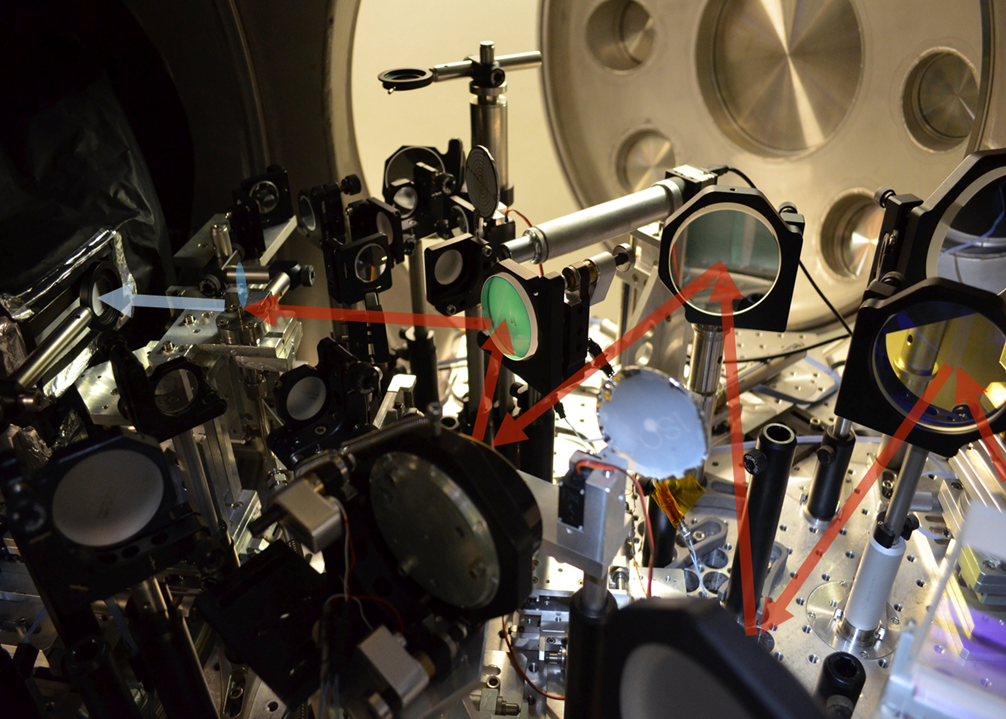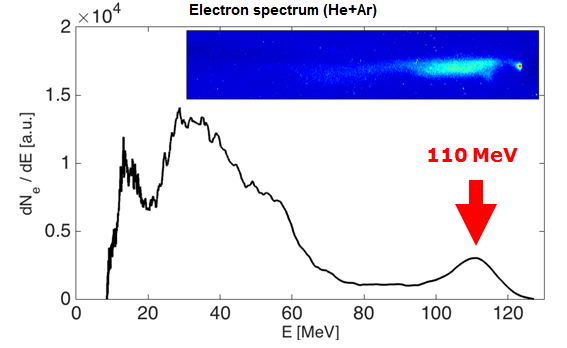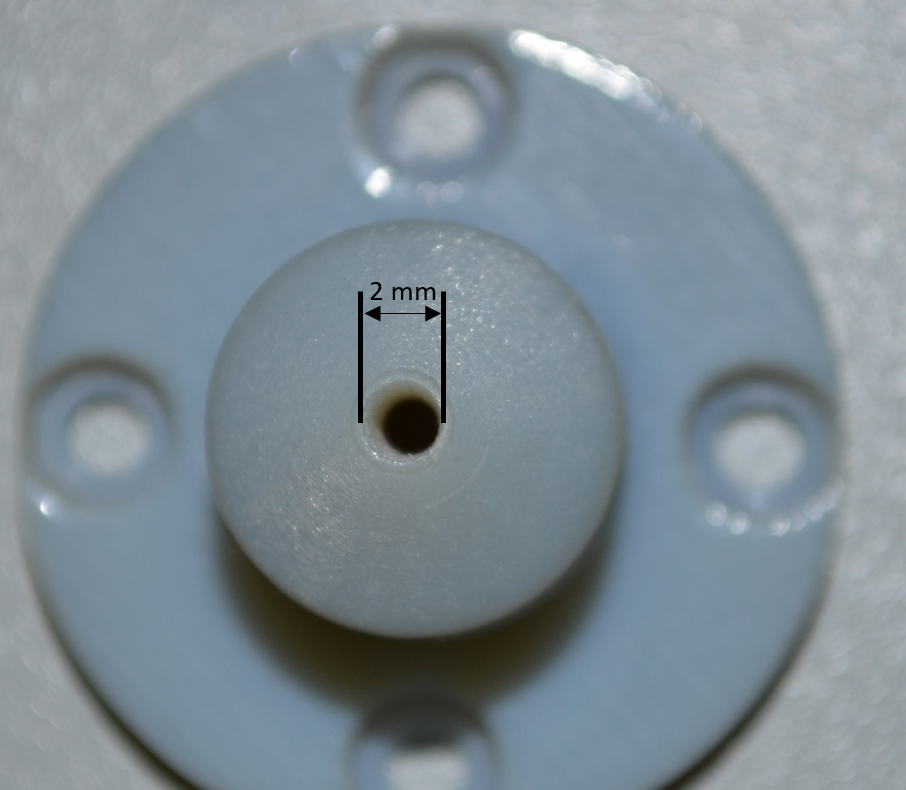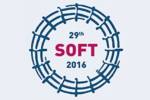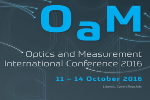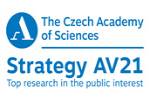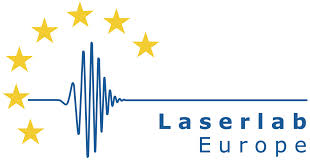During the last experiment in the PALS Research Centre, collimated electron beams with an energy of 110 MeV were generated.
The results have been obtained on small-scale high power femtosecond titanium-sapphire laser
system (25 TW, 1 J). This laser is usually used both for generation of soft (high harmonics, X-ray
lasers) and hard X-rays, and for acceleration of charged particles, in particular electrons.
Laser pulse produces, in an ionized gas (commonly helium) jet, a plasma wave carrying a large
electric field (100 GV/m) which accelerates an electron bunch. Such field is thousand-times higher
than the field in conventional accelerators. Thus, the dimensions of an accelerator itself can be
reduced to few millimeters. This opens a possibility of construction of table-top
accelerators.
This system represents the most energetic electron accelerator in the Czech Republic and the
second most energetic charged particle accelerator in general (after the Proton Therapy Center
where proton beams are accelerated by the conventional accelerator up to 230 MeV).
High-energy electron beams can be used in hard (both coherent and non-coherent) X-ray and
gamma-ray generation, radiography, radionuclide production, etc.
Photos: Miroslav Krůs
20 Jul 2016



